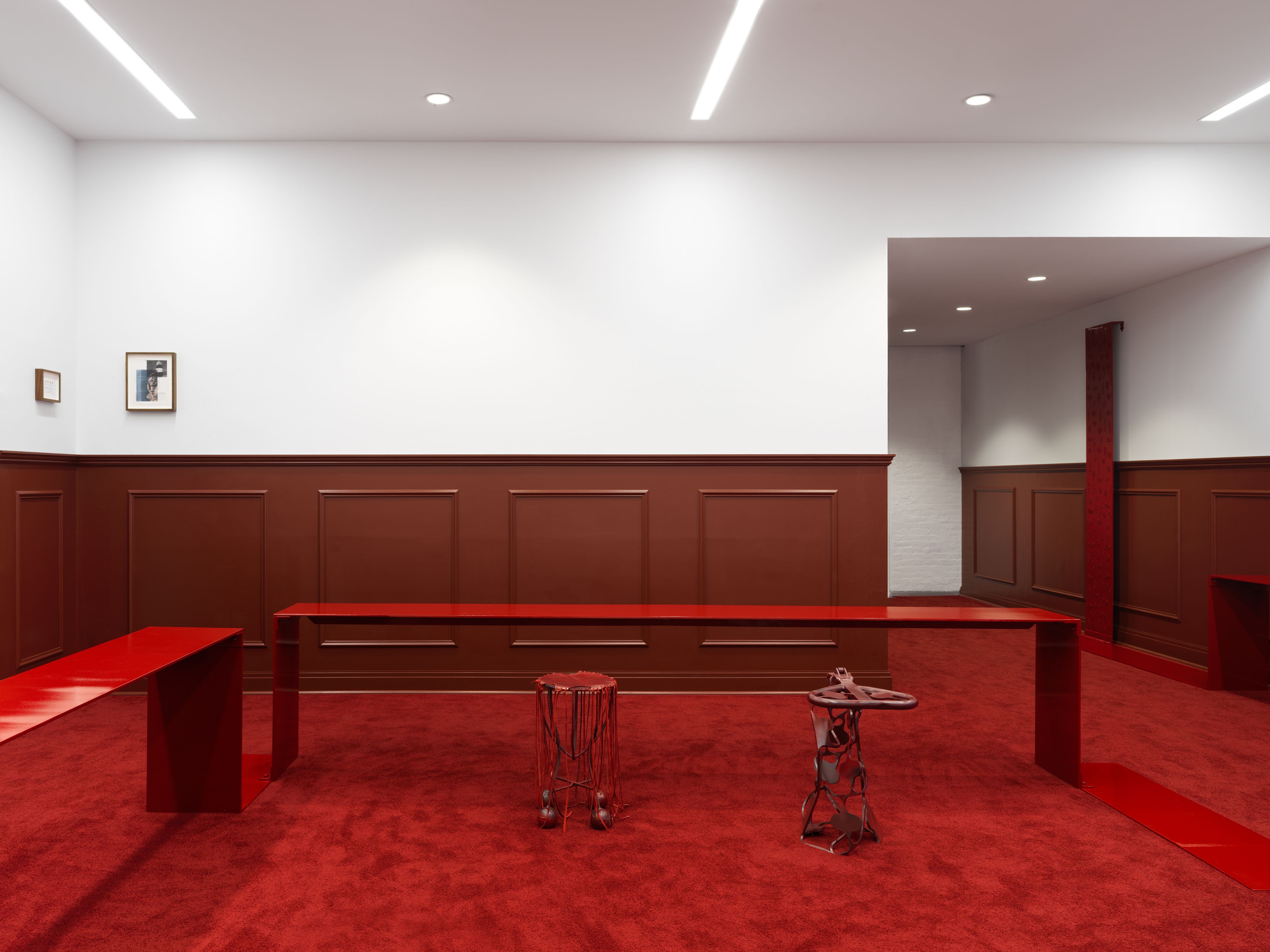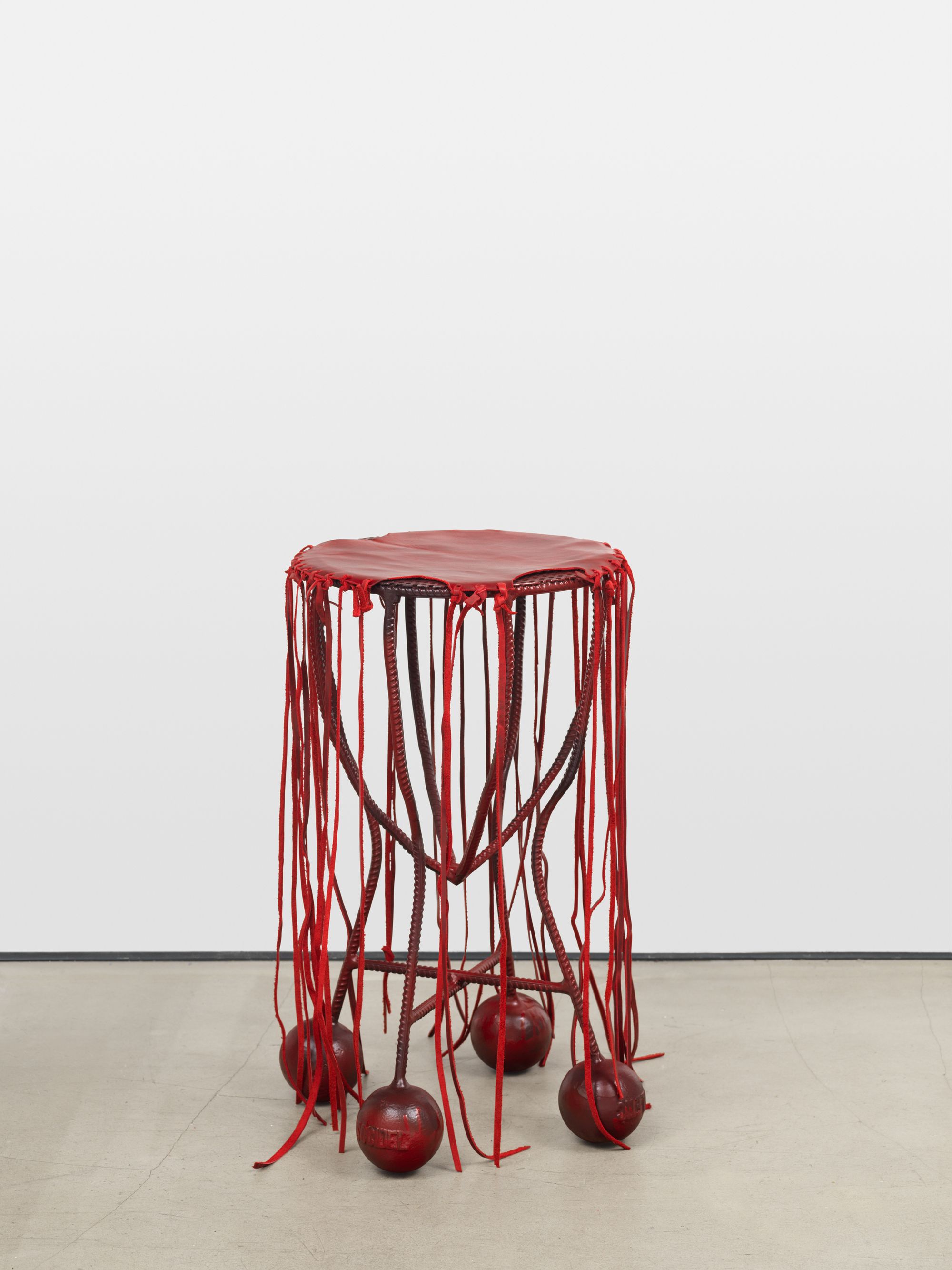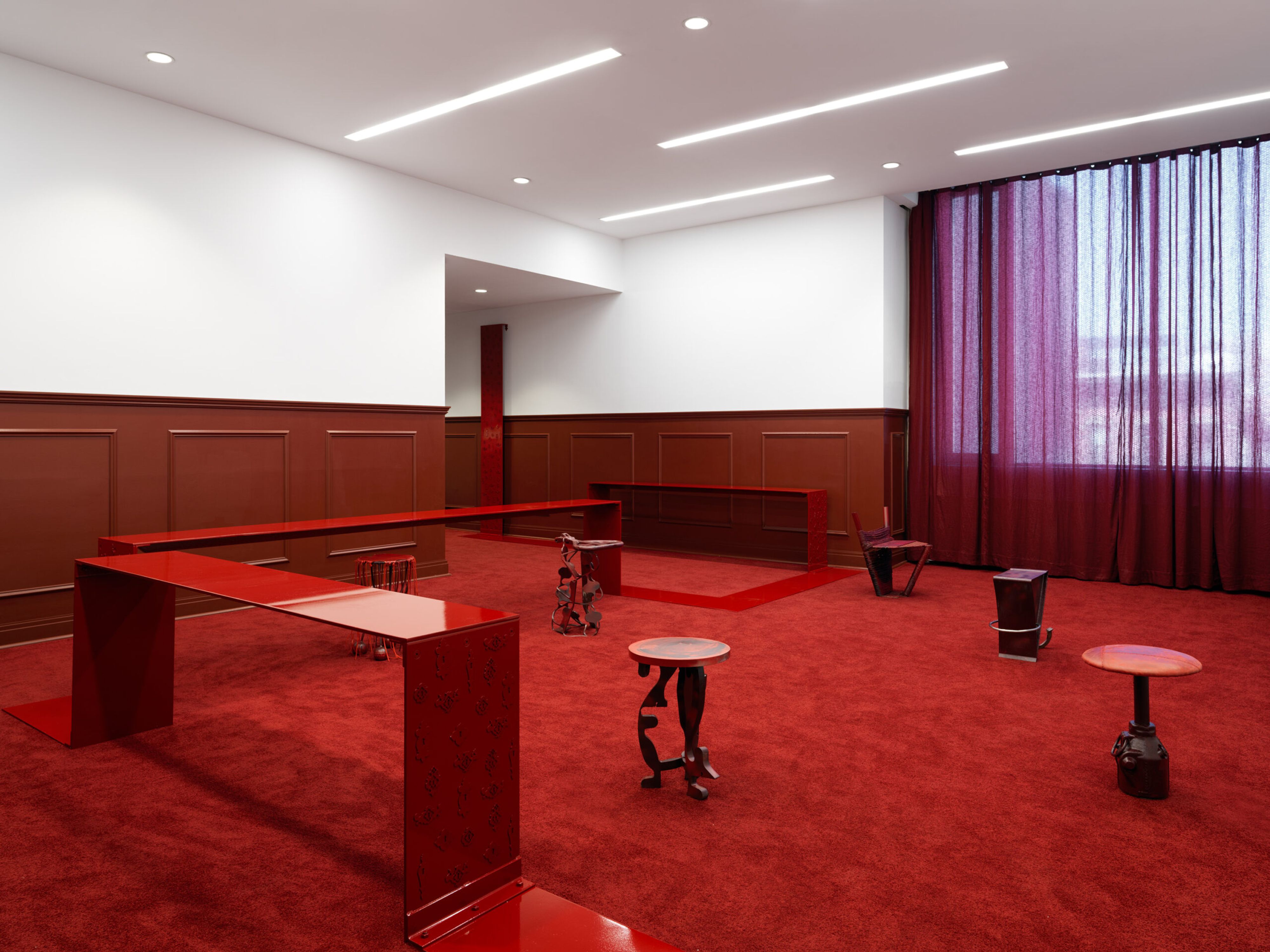
One of the stools in Dozie Kanu’s Blood Type at Performance Space New York. Photo Photo by Dan Bradica; courtesy of Performance Space New York and Project Native Informant.

Dozie Kanu’s installation Blood Type at Performance Space New York. Photo Photo by Dan Bradica; courtesy of Performance Space New York and Project Native Informant.
There is a New Yorker cartoon that shows two women sitting in front of a large abstract painting, seemingly in a museum. One of them says to the other: “I like this painting because it has a bench.” The joke lands because we have all been there: in institutional art spaces taking in rooms curated down to the smallest detail, but this thoughtfulness doesn’t always extend to spectators. Space for rest in museums and galleries is far from common, so the new “Open Room” on the fourth floor of the historic Performance Space New York in the East Village, a new program devoted to finding new ways of making public space in their lobby, is a notable arrival, particularly after institutions in New York that may have opened their doors to mutual aid initiatives at the height of the pandemic are now back to their regularly scheduled programming.
The room is defined as a publicly accessible community space, and its inaugural exhibition is Dozie Kanu’s Blood Type. Kanu practices intentionally at the intersecting points between design, fine art, performance, and set design — resulting in works such as a series of chairs including Chair [iii]; a chair made out of concrete and set atop a car wheel, or Student Loan Debt Relief; a more sculptural stool sprayed fittingly in money-green. In this case, he has filled the room with an installation that sets the tone for the accessible and free space going forward. If a visitor takes the elevator up, they step out directly into the room and onto a deep red wall-to-wall carpet. Greeting you as you step into the space is a metal ribbon that begins high on the wall in front of you and licks down to the floor where it turns into a table that curves through the space — a communal surface reminiscent of a more commercial space like a coffee bar, but painted crimson and punctuated by lock and key motifs. It begs the question of what public comfortable spaces exist like this, aside from people’s homes. Along the table there are a handful of stools to be used by visitors, also deep red, and recognizably Kanu’s by their found material assemblages of steel and leather. In front of the windows are not-quite-opaque curtains in the same color scheme that enclose the space.

One of the stools in Dozie Kanu’s Blood Type at Performance Space New York. Photo Photo by Dan Bradica; courtesy of Performance Space New York and Project Native Informant.

Another stool in Dozie Kanu’s Blood Type at Performance Space New York. Photo Photo by Dan Bradica; courtesy of Performance Space New York and Project Native Informant.

A stool in Dozie Kanu’s Blood Type at Performance Space New York. Photo Photo by Dan Bradica; courtesy of Performance Space New York and Project Native Informant.
The objects in the room bring the viewer in to the process of how it might have come together — you can’t help but wonder where the materials of the space came from, or what it looked like before they were brought in — and this can be attributed in part to what Kanu has described as “finding comfort in discomfort,” whether that refers to living between different cultures (Nigerian and American, in Kanu’s case); considering the labor that goes into building comfortable places for rest; or creating a space for his practice that does not fit squarely into any one category of material output. This is not the first time he has used carpeting in an installation, a simple but effective move that makes clear that the space is meant to be inhabited. Kanu brings himself into the space through two framed papers in one corner of the room, which are blood test results that work his own autobiography into the space, though you could easily miss them if you weren’t looking closely.

Dozie Kanu’s installation Blood Type at Performance Space New York. Photo Photo by Dan Bradica; courtesy of Performance Space New York and Project Native Informant.
Kanu, who studied filmmaking and film production in school, has created a set of sorts with Blood Type. The space feels like he has designed a vessel for visitors to enter into and make their own. Though the space has a robust public programming schedule, when I visited, someone was using the room to take a personal Zoom call. Public spaces are only as public as their community deems them, and with this installation Kanu places his practice in the realm of projects such as Isamu Noguchi’s playgrounds, or Theaster Gates’s Stony Island Arts Bank — experiential with a practical lens. It’s an intersection that Kanu has already made himself at home in — comfortably and with access to water, restrooms and wifi.